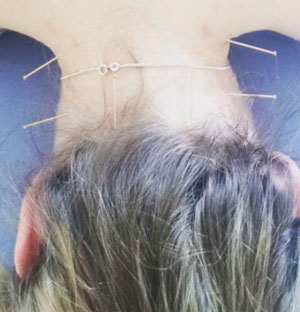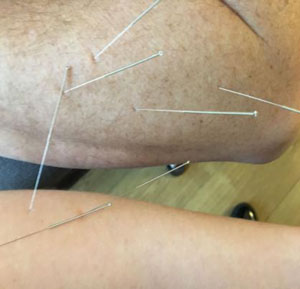Carl and Emma have undertaken further post graduate training to use Western Medical Acupuncture also known as Dry Needling within their osteopathic treatments.

Dry Needling for the Neck
It is not one of the forms of traditional Chinese Acupuncture, where points are chosen using a traditional diagnostic approach which typically includes examination of the tongue, eye and pulses and should not be confused as such. The type of treatment that our osteopaths may use as part of a treatment plan if they feel it is appropriate to your condition/symptoms, is the insertion of very fine needles using current anatomical and physiological knowledge just under the skin, or deeper so they reach muscle tissue to help alleviate tight muscles targeting trigger points, to treat. It is based on well researched medical evidence. It acts mainly by stimulating the nervous system and is used mostly to treat musculoskeletal pain. It increases the release of the bodies natural painkiller including endorphins and serotonin’s. This modifies the way pain signals are received by the brain to alter your pain response.
We will only use dry needling with your consent and complete agreement and only when it is a suitable treatment for you.

Dry Needling for the Elbow
We understand that many people may have concerns about whether acupuncture hurts but the needles used are fine and are usually a few centimetres long,they are single-use, pre-sterilised needles that are disposed of immediately after use. Our osteopaths choose specific points to place the needles based on your condition. From 1 to 12 points will typically be used during a session, and sometimes more depending on the number of symptoms you have. The needles may be inserted just under the skin, or deeper so they reach muscle tissue. Once the needles are in place, they may be left in position for a length of time lasting from a few minutes up to around 15 minutes. You may feel a tingling or a dull ache when the needles are inserted. You should not experience any significant pain. If you do, let your osteopath know straight away.




 Find us on Google
Find us on Google